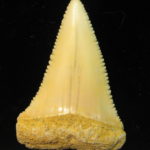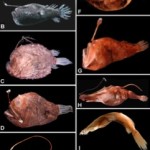 My understanding of what makes a good children’s book changed dramatically about 15 months ago, when my baby daughter Clara Lynn was born. Before that time, I thought a good children’s library would be a mix of Dr. Seuss, Dick and Jane, Sesame Street, and Winnie the Pooh. These were the stories I grew up with in the Seventies. I knew to beware of hypnotic modern characters like Barney and Elmo who could steal your child’s mind and win their affections. I pictured myself reading the Hobbit from a rocking chair at nighttime, while my daughter stared lovingly from under a cozy blanket. All that’s changed now.
My understanding of what makes a good children’s book changed dramatically about 15 months ago, when my baby daughter Clara Lynn was born. Before that time, I thought a good children’s library would be a mix of Dr. Seuss, Dick and Jane, Sesame Street, and Winnie the Pooh. These were the stories I grew up with in the Seventies. I knew to beware of hypnotic modern characters like Barney and Elmo who could steal your child’s mind and win their affections. I pictured myself reading the Hobbit from a rocking chair at nighttime, while my daughter stared lovingly from under a cozy blanket. All that’s changed now.
Now books are a last line of defense against a daily flurry of activities. In my family, these are transitional tools that calm an overtired child and educate them at the same time. My experience is currently limited to only one lunatic child, but that will change in a month. So far, I have gathered these few lessons.
An easy book has one thing on each page- like a cow, horse, kitty cat, doggie, fish. I call these “point and say” books. The child points, and you say. Good baby books are brightly colored, with butterflies and nenes (pronounced nay-nays). Nenes are other babies. Great books have funny pictures with a catchy rhyme (Sheep in a Jeep) or a song (Wheels on the Bus). If you ask my girl Clara what she likes best, she’ll pick a Disney Princess book where you press a button to hear a song, then she’ll dance along. The books we buy at the store are strong and durable, with short words and lots of furry animals. The best books for us are board books, not paper. Paper won’t last five minutes in my house.
All these changes in my attitudes about children’s books came home to roost a few weeks ago when a package of children’s books from Charlesbridge Publishing in Watertown, Massachusetts arrived at the door. The box contained five different children’s books with ocean themes. That’s impressive, right? They found our niche! So, I looked over each of them, and they’re all terrific. (Please send more.)
Rather than criticize, I’ll just categorize, and tell you which books are best for which kids. Judging from the content, most of the books are written by marine biologists. “Surprise, the planula is changing.” Each book is handsomely illustrated, but only one of them is a board book- The Ocean Alphabet. “X is for Xiphius Gladius… the scientific name for swordfish.” Therefore, this will be the first one I feed to my daughter girl. The rest will have to wait a few years.
The Ocean Alphabet
Written by Jerry Pallotta, illustrated by Frank Mazzola, Jr.
This board book satisfies several criteria for parental newbies like myself. It’s durable and strong, colorful, educational, and there’s only one thing per page. “V is for Viperfish”. This book provides information way above it’s reader level, but this is not necessarily a problem. It continues to keep parents interested as they read the book to their child for the 30th time.
The Underwater Alphabet
Written by Jerry Pallotta, illustrated by Edgar Stewart
This one’s very fish-centric (J is for Jacknife Fish), with a few exceptions (M is for Man-o War). The watercolor illustrations are absolutely luscious, and again it’s one animal per page. The publication is a thin glossy paperback. It has a clear environmental message.
At Home in the Coral Reef
Written by Katy Muzik, illustrated by Katherine Brown-Wing
This one was definitely written by a marine biologist. The author is a bit of a legend where I work sometimes in the Invertebrate Zoology department at the Smithsonian Natural History Museum. Katy Muzik wins the award for most exciting story telling of a coral spawning event. “Watch out little planula. Watch out for those hungry wrasses.” The book is perfect for a young reader who just learned to scuba dive. It will help them connect with the new environment. Illustrations are very colorful. Animals are keyed out in the corner of the page. Very nice. Rightly priced at $8 US.
One Night in the Coral Sea
By Sneed B Collard III, illustrated by Robin Brickman
The most richly illustrated of all the books I reviewed. Brickman uses watercolors, paper, scissors, and glue to create her paintings by hand. The effect is like a diorama with the texture of flower petals, dried seeds, and berries. Read the comments form the artist, below! The story is rich and adventurous with a classic narrative style. “In late spring, a few days after the full moon, the sun sets over the Coral Sea.” I loved it. The book tries hard to educate, spelling lar-vee phonetically, etc… but it does an excellent job detailing the intricacies of coral spawning. I dunno. Are fourth graders ready for this stuff? Nicely priced at US$6.95.
The World That We Want
Kim Michelle Toft
This short and memorable story wins the award for beauty in poetry. “This book is dedicatedto finding the balance.” It reads like an Indian haiku, guiding the reader through all the important terrestrial and marine ecosystems- reefs, beaches, mangroves, and tide pools. Oops. No seagrasses. Doesn’t matter. The big draw here is the pull-out poster. Any kid would love it. The illustrations are all hand painted on silk. All this, and it’s as inexpensive as the rest.





